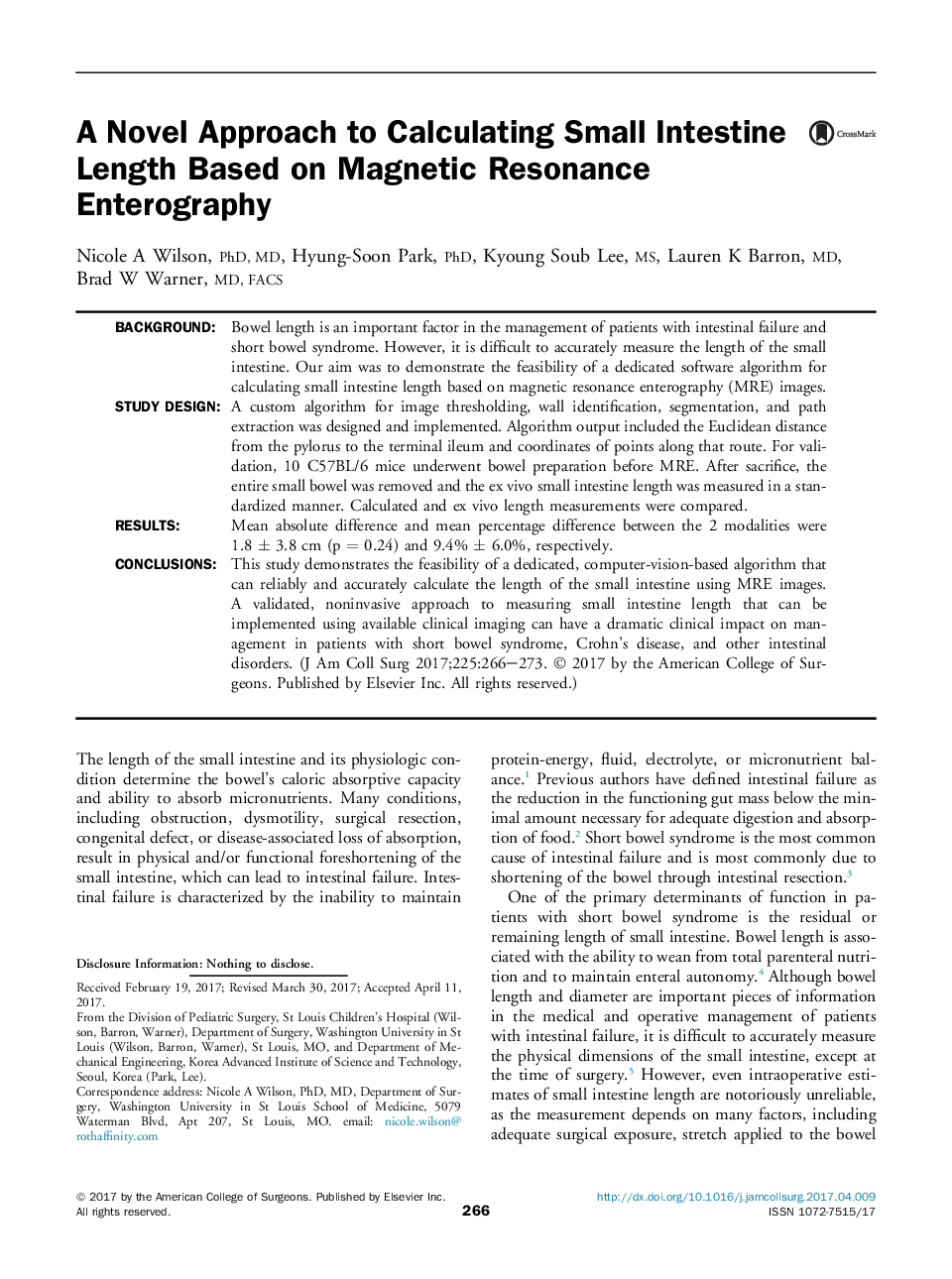| Article ID | Journal | Published Year | Pages | File Type |
|---|---|---|---|---|
| 5733437 | Journal of the American College of Surgeons | 2017 | 9 Pages |
BackgroundBowel length is an important factor in the management of patients with intestinal failure and short bowel syndrome. However, it is difficult to accurately measure the length of the small intestine. Our aim was to demonstrate the feasibility of a dedicated software algorithm for calculating small intestine length based on magnetic resonance enterography (MRE) images.Study DesignA custom algorithm for image thresholding, wall identification, segmentation, and path extraction was designed and implemented. Algorithm output included the Euclidean distance from the pylorus to the terminal ileum and coordinates of points along that route. For validation, 10 C57BL/6 mice underwent bowel preparation before MRE. After sacrifice, the entire small bowel was removed and the ex vivo small intestine length was measured in a standardized manner. Calculated and ex vivo length measurements were compared.ResultsMean absolute difference and mean percentage difference between the 2 modalities were 1.8 ± 3.8 cm (p = 0.24) and 9.4% ± 6.0%, respectively.ConclusionsThis study demonstrates the feasibility of a dedicated, computer-vision-based algorithm that can reliably and accurately calculate the length of the small intestine using MRE images. A validated, noninvasive approach to measuring small intestine length that can be implemented using available clinical imaging can have a dramatic clinical impact on management in patients with short bowel syndrome, Crohn's disease, and other intestinal disorders.
